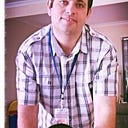Part 1: The Living Map
I work for an organisation of about 500, spread across 6 sites and half a country. We are going through another major reorganization, the 3rd in 4 years. Our pain is the same as every other organisation you will read about so I will not bore you.
My problem is that I couldn’t just accept that this state of affairs is the fate of all organisations and the fate of all people that inhabit them, take my pay check and go home.
For the last 18 months I have been searching for something better, initially my area of focus was Social Network Analysis for Organisations which led to a more ambitious project to map all inter-dependencies between my organisation’s people, processes and systems. In short to do to my organisation what the NSA does to everybody else.
I had a vision of creating a living map of my organisation, in this vision all of the warring clans would gather around the living map, bottlenecks, friction points, un-maintained assets and general wastage would be visible and clear to all. Changes would be made, the living map would update automagically, we would gather round the living map once more to find the next step on the path to glory. I wanted a tool that would allow my brothers and sisters to focus their fantastic intelligence, their dedication, their strength toward attacking the problems holding us back instead of attacking each other while we tread water far from land.
I was nervous even before the project started, deep down I knew this was a long shot but without a better alternative I pushed down my doubts and set out. The results were predictable, unable to show progress in climbing the mountain, a few months in the project was transferred to someone else who had a different vision, spreadsheets, lots and lots of out of date before you press the save button, spreadsheets.
Silver lining, during the project I came across and interesting technology for managing long dependency chains, graph databases, specifically NEO4J. I began following people on twitter who were using NEO4J to tackle problems similar to mine and I kept following them even after my involvement with the project ended. My thoughts were along the lines that sea birds don’t need to know where the fish are, they just have to follow the fishing boats for long enough and likewise if I followed clever people online one day someone would crack my problem.
I took refuge in a secondment into my organisation’s newly formed Enterprise Architecture practice, unfortunately the same organisational problems that drove me to seek a better answer appeared there also and in the end I reached the conclusion that we were making more problems than we were solving.
A deep sadness settled in, my dream of a living map out of reach, a colleague diagnosed with bowel cancer, another recently retired died of an asbestos related illness. I was running low on answers, but I just don’t know how to walk away.
Then about 1 month ago a single tweet from one of my NEO4J follows made me take a 90 degree turn.
When I started to read I went through the following stages over a period of about 3–4 days:
1. What?
2. Too radical could never work here
3. It could work but it can’t happen here
4. This will work here
Holacracy would create my living map, not as I envisaged through interpreting the entrails of our email and network traffic. Holacracy would make every human in the organisation a distributed node on a living super computer, trained and required to continuously run the core Holacracy algorithm:
Went into sales mode, received positive feedback, and was asked to research more. Read articles and watched videos, started to create mind maps of my questions, the common criticisms of Holacracy and the counter points others had written and plans started to form on how to remake my organisation as a Holacratic super computer.

